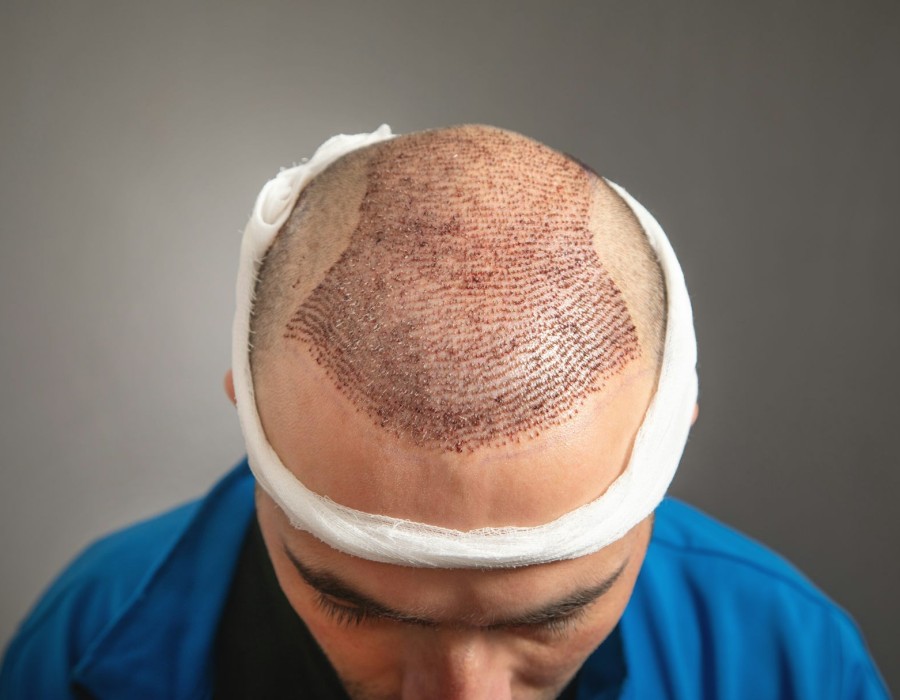Hair loss is a concern that affects people of all ages and genders, often leading to a drop in self-confidence and emotional discomfort. Fortunately, modern aesthetic medicine offers effective solutions to restore hair and confidence alike. Among the most widely discussed options are PRP therapy and hair transplant surgery. But how do these treatments compare in terms of effectiveness, longevity, recovery, and cost? Understanding the difference between the two is crucial in choosing the right treatment based on your hair loss condition and personal preferences. If you're exploring options like Hair transplant in Islamabad, it's essential to understand how it stacks up against alternatives like PRP therapy.
What Is PRP Therapy?
PRP stands for Platelet-Rich Plasma, a regenerative treatment that uses your body’s own blood to stimulate hair growth. The process involves:
- Drawing a small amount of your blood
- Centrifuging it to concentrate the platelets
- Injecting the platelet-rich solution into areas of the scalp experiencing thinning or early-stage hair loss
Platelets contain growth factors that stimulate the activity of hair follicles, prolonging the growing phase and improving hair density over time. PRP is particularly effective for patients experiencing hair thinning, androgenetic alopecia (early pattern baldness), or hair shedding due to stress or hormonal changes.
What Is a Hair Transplant?
A hair transplant is a surgical procedure that involves relocating healthy hair follicles from one part of the scalp (usually the back or sides) to balding or thinning areas. There are two common techniques:
- FUE (Follicular Unit Extraction): Individual follicles are extracted and re-implanted one by one
- FUT (Follicular Unit Transplantation): A strip of skin is removed, and follicles are harvested and transplanted
Unlike PRP, which stimulates existing follicles, a transplant provides new permanent hair growth by physically moving hair to balding areas.
Key Differences Between PRP Therapy and Hair Transplant
Let’s break down the differences based on key aspects:
1. Nature of the Procedure
- PRP Therapy: Non-surgical and minimally invasive; involves only injections.
- Hair Transplant: Surgical procedure requiring local anesthesia, incisions, and recovery time.
2. Ideal Candidate
- PRP Therapy: Best for patients with thinning hair, early-stage hair loss, or weak follicles still capable of growing hair. Not suitable for fully bald areas.
- Hair Transplant: Suitable for individuals with significant hair loss or bald patches where follicles are no longer active.
3. Results Timeline
- PRP Therapy: Results appear gradually over 3 to 6 months, requiring multiple sessions. Maintenance treatments are usually recommended every 6–12 months.
- Hair Transplant: New hair begins to grow around 3–4 months after the procedure. Full results are visible within 9–12 months and are permanent.
4. Invasiveness and Recovery
- PRP Therapy: No downtime; patients can resume daily activities the same day. Minor redness or sensitivity may occur temporarily.
- Hair Transplant: Requires at least 7–10 days of downtime for healing. Scabs, swelling, and mild discomfort are expected during the first week.
5. Cost Comparison
- PRP Therapy: Lower cost per session but requires multiple sessions and ongoing maintenance.
- Hair Transplant: Higher upfront cost but typically a one-time investment with permanent results.
6. Risk and Side Effects
- PRP Therapy: Very low risk since it uses your own blood. Mild irritation, bruising, or redness may occur at injection sites.
- Hair Transplant: Generally safe when performed by qualified surgeons, but includes surgical risks like infection, scarring, or graft failure in rare cases.
7. Effectiveness and Longevity
- PRP Therapy: Most effective in slowing down hair loss and thickening existing hair. It may not significantly reverse advanced baldness.
- Hair Transplant: Offers a long-term solution with permanent and natural-looking hair growth in bald areas.
Which One Should You Choose?
The choice between PRP therapy and a hair transplant depends on the extent of your hair loss, your goals, and your overall health.
Choose PRP if:
- You are in the early stages of hair thinning
- Your follicles are still active but weak
- You prefer a non-surgical, low-risk approach
- You're looking to improve hair density rather than restore hairline
Choose a Hair Transplant if:
- You have extensive baldness or inactive follicles
- You want a permanent and fuller restoration
- You're prepared for surgery and the recovery period
- You’re seeking a one-time solution with lasting results
In many cases, both treatments can complement each other. For example, PRP therapy is often used after a hair transplant to enhance healing and improve graft survival.
Combining PRP and Hair Transplant: A Powerful Duo
Some clinics recommend combining both approaches for optimal results. Here’s how:
- Before surgery: PRP can prepare the scalp and improve follicle health
- During surgery: PRP may be applied to the grafted area to promote faster healing
- After surgery: PRP treatments can reduce inflammation, increase blood flow, and improve hair thickness
This synergy provides a comprehensive approach to treating hair loss at both the root (follicular health) and the surface (graft restoration) levels.
Expert Guidance Is Crucial
Whichever treatment you’re considering, professional evaluation is essential. Not all patients are ideal candidates for PRP or transplantation. A skilled doctor will assess your hair loss pattern, scalp condition, medical history, and expectations before recommending the most suitable plan.
Clinics that offer both services under one roof can provide you with a full range of options. They can tailor treatments to your needs—whether it’s a solo therapy, a combined protocol, or even starting with PRP and considering a transplant later.
Conclusion
When comparing PRP therapy and a hair transplant, there is no one-size-fits-all solution. PRP is best suited for early intervention and hair maintenance, while a hair transplant offers a permanent fix for more advanced hair loss. Understanding your hair loss type, goals, and preferences will help determine the most effective approach.





Comments